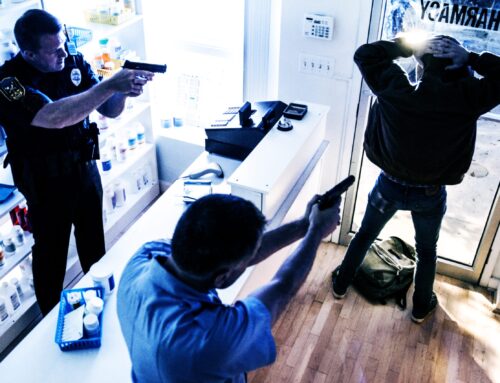The Pros and Cons of Massachusetts Criminal Justice Reform

A 2024 report by the Massachusetts Institute for a New Commonwealth analyzed current trends in Massachusetts’s criminal justice system. The report focused on determining how a slate of criminal justice reforms from 2019 affected the state’s prisons and jails. The results were mixed, with some positive and some negative.
How Massachusetts Reformed its Criminal Justice System
In 2018, Massachusetts legislators passed a slate of considerable, even unprecedented, criminal justice reform legislation. The goals of the reform were many, but most focused on reducing repeat offending, moving those with mental illness and substance use disorder from prisons and jails to treatment, and closing stark racial disparities in incarceration. While the pandemic made it difficult to assess exactly how successful the reforms were, a five-year report was still authored and published in January 2024 to determine where the reforms succeeded and where there was still work to be done.1

Image Courtesy of mass.gov
The most significant goal of the 2018 reforms (and the area where the reforms were most successful) was to reduce the prison population in Massachusetts. From 2010 through 2023, particularly during the reform period of 2019 through 2024, Massachusetts halved its incarcerated population. Every year, as the state incarcerated fewer and fewer people, Massachusetts diverted monies that would have gone to incarcerating offenders. Instead, it spent those monies on crime prevention, treatment, and reentry services.
So far, that model seems to be working. Massachusetts’s incarceration rate is the lowest in the country, crime has declined in Massachusetts relative to the nation, and the state avoided most of the crime spikes that occurred across the U.S. in 2022 and 2023.
As for what the state did to produce these outcomes, some of the features of the 2018 reforms included:
- Significant reforms to pretrial detention
- New provisions for medical and end-of-life release
- Reduction in sentence length for certain drug crimes
- Better regulations around when prisons can use solitary confinement
- Decriminalizing minor offenses to keep low-level offenders out of the carceral system
- Improving systems that give inmates “good time” for completing rehabilitative programs in prison
- Expanding diversion programs for juveniles and adults with behavioral health issues to help them get better
- Improving transparency requirements to ensure prisons are reporting accurate data about program implementation
Positive Results of the Criminal Justice Reforms in Massachusetts
As touched on briefly above, the criminal justice reforms in Massachusetts seem to be working. Following are some highlights of how things have changed in the state following the 2018 reforms:
Since 2018, Massachusetts has reduced its prison population at twice the rate of the U.S.’s overall average rate of prison population reduction.
Even as Massachusetts dramatically reduced its prison population, neither the state’s violent crime rate nor the property crime rate went up in any year since 2018 except in 2022. (In 2022, the increase in crime was mostly confined to a handful of Massachusetts cities).

Photo by Marcio Jose Bastos Silva/Shutterstock.com
Massachusetts has made the most progress in how it sentences and incarcerates drug offenders. Convictions and sentences for drug-related offenses fell by nearly half. Further, the sentences being handed out today are for fewer years per sentence than before, especially for nonviolent, possession-only drug offenses.
While the entire prison population in the state is going down, some groups are experiencing a faster drop in incarceration than others. The state’s rate of incarcerating teens and women has shown the most significant decline, far outpacing the state’s more gradual decline in incarcerating adults and men.
More people in Massachusetts are being directed to community-supervised release programs upon their release to ensure that former inmates get the help they need to reintegrate into society.
As the prison population declined and the state began to save money by incarcerating fewer individuals, the state legislature reapportioned funds to improve services for offenders and reduce recidivism. Between 2018 and 2023, the state leveraged $20 million for substance abuse treatment, $20 million for better visitation programs, and $33 million for better reentry services.
Massachusetts also used savings on incarceration to spend $50 million per year since 2018 on crime prevention and community economic development in high incarceration rate communities.
What the 2018 Reforms Have Thus Far Failed to Address
While the 2018 reforms have been an excellent step in the right direction for Massachusetts, there have been some key areas where the reforms have been unable to provide equitable and fair results for all offenders in the state. Namely, the criminal justice reforms in the Bay State have disproportionately benefited white inmates. For example, from 2018 to 2023, the rate of incarceration for white Massachusetts residents fell 40% between 2017 and 2021, compared to 32% for Latinos and 21% for Black residents. In 2024, Black people living in Massachusetts are seven times more likely than whites to become incarcerated, a rate even higher than when the reforms went into effect.2
Just as white people have benefited more from the reforms in terms of being released from prison, they’ve also benefited more in terms of how the state now incarcerates offenders following the reform legislation. Case in point, the number of white people who were criminally charged dropped by 26% between 2019 and 2023, the number of Black residents charged fell by 12%, and the number of Latinos charged dropped by just 1%.
The same racial disparities are on display in terms of who has benefited the most from the reform’s medical parole clauses. Overall, about 11% of some 580 people who applied for medical parole between fiscal year 2018 and 2022 were granted release. But who was most successful in securing parole for their medical concerns? About 13% of white petitioners secured medical parole compared to just 7% of Black and Latino petitioners.
More work is needed, as noted by several advocate groups that have closely monitored the implementation of the reforms. Quoting executive director Carol Rose at the American Civil Liberties Union of Massachusetts, “Crucially, this report shows widening racial disparities in who is arrested and incarcerated. If we are serious about eliminating racial inequities in our criminal legal system, Massachusetts must increase data collection and transparency at every stage of the criminal legal system and continue to enact smart, evidence-based sentencing and carceral system reforms.”
The Report’s Recommendations for the Future
After analyzing the five years since the 2018 reforms, the report identified five key areas where Massachusetts should focus its energy to improve its criminal justice system further. These areas aim to:

- Increase continuing care and community-based treatment capacity for former offenders
- Improve data and transparency provisions to ensure 2018 reforms are being implemented
- Maintain and increase residential reentry services to meet currently unmet housing needs for former offenders
- Build community reinvestment programs to reduce recidivism by helping former offenders re-enter society
- Innovate a plan that cohesively and comprehensively addresses lingering issues in Massachusetts criminal justice
Last but not least, the report very briefly touched on the successes of the 2018 reforms in improving access to educational materials in prison, but the report’s authors also said this was an area where Massachusetts could improve. When inmates can get educated both academically and on how to succeed in life without resorting to crime (life skills courses), they are less likely to commit new crimes following their release from prison.
Massachusetts can improve its criminal justice system even further with better educational programs and a more fair, just, and equitable implementation of the 2018 reforms. This approach is the right thing to do for offenders and their communities.
Sources:
- MINC. “Criminal Justice Reform in Massachusetts.” Massachusetts Institute for a New Commonwealth. 2024. documentcloud.org
- GBH. “Five years after landmark criminal justice reform, prison racial disparities widen in Mass.” GBH News, 2024. wgbh.org




